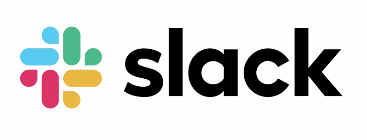
Get weekly
HubSpot updates
I’m not usually a fan of what’s on the radio—it’s podcasts and playlists for me. A few months ago, however, a Radio 4 news bulletin caught my attention. The broadcaster reported that many of the UK's elderly, despite their loyalty to certain service providers, were being considerably overcharged because they didn’t have the tech skills to search for better alternatives online after their contracts had ended.
This isn’t really new news, but it struck a chord with me. I imagined thousands of woolly-haired nannas across the nation having to fork out for energy and mobile bills from their tiny little purses, perhaps at the expense of much-needed Digestive biscuit replenishments.
But it’s not just the elderly that get dealt worse terms with every annual renewal. I recently dodged a bullet by shopping around for pet insurance when my current provider hiked up the price. The irony was that I ended up taking out a new policy with the same insurer simply because their introductory offer was cheaper. Terrible, I know.
Does the fact that I stayed with them make me a loyal customer? No. In fact, I am now a considerably distrustful customer and not one that would recommend the company, but my choice was price-based, and it was a case of better the devil you know.
At least I had the know-how to search this deal out. When I questioned the company’s representative about the logic behind penalising a current customer and forcing them to go through the motions of having to take out a new policy instead of just renewing the old one at a reasonable price, she didn’t have much to offer.
What is brand loyalty?
Loyalty is a behavioural trait whereby people show strong support and allegiance to a person or institution. Brand loyal customers are usually committed to repurchasing your products or services while also displaying other affirmative behaviours such as referring your company to friends and family and leaving positive reviews for your business, but it goes much deeper than that.
On a psychological level, when a customer is brand loyal, there has usually been a series of interactions that have built a connection between your business and the customer, making them more engaged with your content and invested in your offering.
There are, however, different statuses of brand loyalty and not everyone is going to be all in. Learning to navigate between these customers and tailoring your marketing approach is the key to converting the “switchers”, reassuring the “split loyals” and retaining the “hardcore loyals”.
What makes a loyal customer?
Genuinely loyal customers won’t mind paying a little bit more, but your product or service has to add real value. Consumers prioritise price, quality, ease of transaction, transparency, clear communication and great customer service – and they don’t want to spend too long fishing for it.
That’s a tall order for many businesses, and where some fall short, particularly as we move towards a more digital playing field. The approach to winning over a customer's long-term patronage is much more complex and competitive.
The Harvard Business Review points out that “ ...holding on to customers[...]is about helping [them] avoid having to make yet another choice” by creating a cumulative advantage. Not many of us have the time or patience to comb through every available supplier, and despite the assistance offered by price comparison sites, it’s still another thing to add to our ever-increasing list of things to do. Customers often stick with the same brands for the convenience – even though it may be costly. But can your business rely on consumer inertia in the long term?
Don’t be fooled; what you class as a “loyal customer” may be costing you more in the long-term—they are often the first and loudest complainers when your product quality or service delivery slips up. It’s also essential that you prepare for a customer whose loyalty is much trickier to engage: the millennial, whose increasing purchasing power will be a sizable chunk of your current and future market.
Need help identifying who your customers are, working out their needs, or adapting your content to suit them? We've created a Buyer Persona's Guide to help you.
Does it matter?
From an ethical business perspective, it makes sense to provide your existing customers with the best deal for the service and product you supply. Lifetime customers are more lucrative because they give you the opportunity to upsell product extensions, generate free marketing through referrals and word-of-mouth promotion, and potentially help you to form a barrier against competitors entering the market.

Understandably, however, it can be tough for new businesses to build a loyal customer base; particularly at the beginning stages when most of your efforts are centred around attracting, converting and closing sales. Sometimes, this can be a very aggressive part of your marketing campaign: you may have to price cut for competitive entry, dish out expensive free samples, spend a large portion of your budget on advertising, promotion, and making sure your website is optimised for sales.
But, ultimately, it does all matter. The relationships you create with your customers will see your business through difficult economic periods, increase your revenue, boost your advertising (for free), and also provide you with valuable data to continuously improve and expand your offering.
So, how do you set your business up for growth while also ensuring that you retain and delight new and existing customers throughout their buyer’s journey?
Fortify your brand
One of the top reasons why customers may lose interest in your brand is an increasingly competitive market. There are businesses who are all vying for your customer’s attention across every available platform.
Is that bad news for you? Not necessarily.
With the right digital marketing strategy, your message can still be the clearest. That doesn’t mean a complete overhaul of your brand or scrapping your existing website to incorporate what all the cool kids on the block are doing. Sometimes, that’s entirely the wrong move.
There are a few things you could start with that wouldn’t cost much at all:
- Assessing the consistency of your branding and messaging throughout your digital real-estate. For example, Slack recently chose to do just this by changing their Logo.

Ta-da! From today, Slack has a new logo, the start of a general refresh of our look. A little simpler, a little clearer, and (we think) a little better. Read more about this change in the handy blog post we’ve written about it: https://t.co/LT1ju7kGxw pic.twitter.com/aceZMCb5St
— Slack (@SlackHQ) January 16, 2019
- Re-evaluate the buyer personas you are targeting and make sure you are truly catering for their needs.
- Check that your value proposition is actually worthwhile to customers, depending on their position in the sales funnel – this also involves reviewing your content and making sure that it’s clear, relevant and engaging.
- Ensure that your sales and support service is exceptional.
- Don’t forget that your employees are your brand ambassadors; they need to have as much buy-in to your mission statement as you do, as well as the tools and skills to perform the tasks at hand.
What’s changed?
According to a recent report, millennials now make up the majority of the workforce – that means they are also one of the biggest consumer groups. These digitally adept, information-hungry customers are not easily enticed by loyalty reward schemes or traditional targeting. To appeal to these consumers, your business should:
- offer personalisation of services and products – millennials want to be involved in the design and creation of what they buy;
- customised communication that speaks directly to the buyer without infringing on their privacy;
- experiential and multisensory services (the market is moving away from purely material purchases);
- have an association with the causes and individuals your consumers care about.
These requirements reach beyond just the millennial segment of the market, of course. Your product may not be targeted for this age group at all. It’s important to acknowledge, however, that in an information-dense environment, your customers are likely to be looking for a shining beacon that offers them the security of purchasing a trusted product or service. They want easily accessible, comprehensive content and information that answers all their questions and eliminates as much of the background noise that competitors produce as possible.
The big picture brand
As an inbound business, you should also recognise that locking customers into contracts that don’t fit their needs or stretch their means may only come back to bite you later. Like when that pesky millennial goes to visit their nan and notices that she’s been overpaying for a service and promptly takes to every available social media outlet to complain. You then lose a current as well as a prospective customer in one fell swoop.
Brand loyalty is an incredibly powerful but fragile tool. Establishing it takes years, destroying it takes seconds, but investing in it from the start is tremendously rewarding. It’s something that is earned by building strong relationships with the right customers for your business.
Some of the biggest and most successful brands in the world have been around for generations, working their way into our homes, hearts and vocabulary. As businesses become more and more digitised, it’s vital to create an online presence that will help your business to grow into the kind of brand that will stand the test of time.
Klood can help you to map out a Gameplan that does just that. We specialise in making businesses acquire and convert more customers using an inbound methodology that will shape and position your brand as a market leader, earning a loyal and engaged following.
